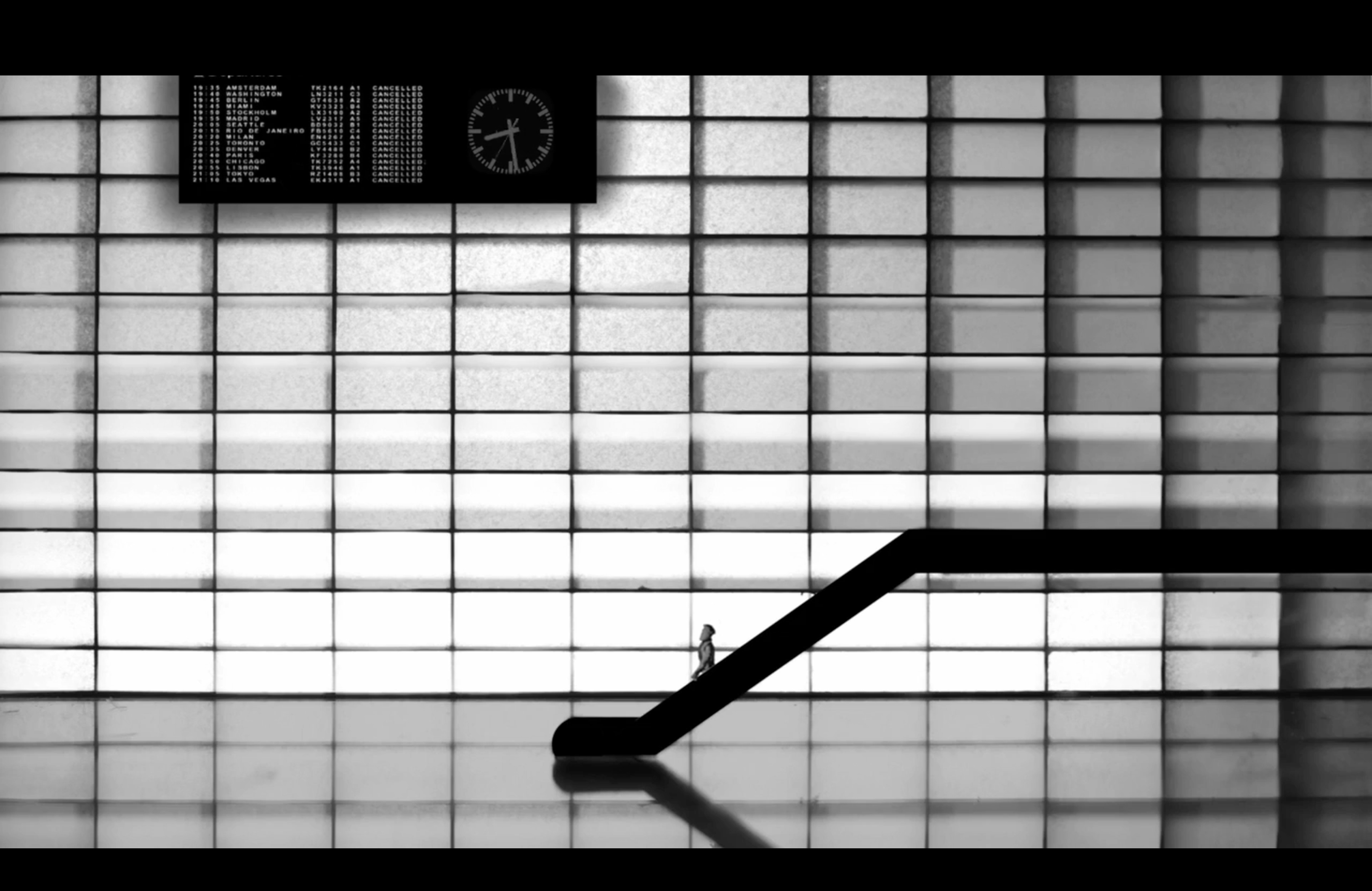Film Analysis & Sound Design Approach
Narrative Interpretation:
The exact narrative or message of the film "Die Kurbel" remains ambiguous. However, through its stark black-and-white visuals and surreal aesthetic, the film appears to depict a man's psychological journey as he attempts to escape his past. The empty train station symbolizes inner emptiness and unresolved issues. Short glimpses of hope arise — particularly in the waiting room and on the moving walkway — suggesting a transition towards a better future. Yet, fear and doubt return, especially just before boarding the train. The euphoric moment during the train ride (represented by the hand crank) indicates a breakthrough, but the return of past trauma reminds us that progress is never linear. Tearing the film reel symbolizes a confrontation and partial release from the past, although the bleak cloudscape beyond suggests that the future remains uncertain.
Stylistic Elements:
The film is visually dark and unsettling, with quick cuts contrasted by long static shots. Emotion is difficult to read due to the expressionless characters and monochrome palette. Overall, the film evokes a bizarre and slightly disturbing mood.
Focus of the Soundtrack:
The sound design mirrors the film’s surreal, oppressive atmosphere. Heavy use of synthesizer-based drones and sub-bass sets the foundation. Melody is almost entirely avoided, except during the train sequence, which serves as a rare moment of hope and forward motion. Ambient sounds and Foley effects are minimal and only used to support key actions. The sound should feel close and intimate, heightening the claustrophobic nature of the visuals. The sonic flow relies on rhythm and frequency rather than harmony, inspired loosely by Hans Zimmer’s approach to "sound walls" and massive textures.
Working Method:
Due to the abstract nature of the film, the composer chose an intuitive approach. The process began with designing the main drones using synthesizers, layering different octaves for emotional contrast. These textures evolve subtly throughout the film. Environmental and movement-related sounds were added sparingly from field recordings and libraries, keeping them close to the ear to emphasize surrealism. Dynamics and panning were automated according to character position and motion. Reverb was applied selectively to glue the elements together and create cohesion.
Conclusion:
Given the unclear plot but visually dark world, the intuitive and unconventional sound design approach proved effective. Avoiding naturalistic sounds and focusing on emotional textures allowed the composer to highlight moods instead of actions. Replacing melody with rhythm and using subtle semitone shifts helped create a unique atmosphere. Ultimately, the motto “breaking the norm” fit perfectly for this project.
